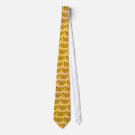When Adar Comes In
ב"ה
Purim is in the Jewish month of Adar (Adar II in leap years, like 5774 -- 2014 on the secular calendar).
There's an interesting anomaly that occurred recently in our family, Thank G-d. Two of my nephews (they're brothers) are 15 months apart age-wise, but their Bar Mitzva celebrations were only 14 months apart. Why? Well because the younger brother was born in Adar II in a leap year but the year of his Bar Mitzva celebration was not a leap year, so his birthday and hence his Bar Mitzva fell in Adar, not Adar II. (See links below for more about the Jewish Calendar and the month of Adar and all its variations:)
There's an interesting anomaly that occurred recently in our family, Thank G-d. Two of my nephews (they're brothers) are 15 months apart age-wise, but their Bar Mitzva celebrations were only 14 months apart. Why? Well because the younger brother was born in Adar II in a leap year but the year of his Bar Mitzva celebration was not a leap year, so his birthday and hence his Bar Mitzva fell in Adar, not Adar II. (See links below for more about the Jewish Calendar and the month of Adar and all its variations:)
On the night of Purim and the morning of Purim, we go to the synagogue to hear the reading of the Megilla -- the Book of Esther. Part of Ketuvim, the writings (the Hebrew Bible is made up of Tora, N'vi'im (Prophets) andKetuvim), the Book of Esther tells the story of Esther and Mordekhai and what led to the holiday of Purim.
If you read the story itself year in and year out, you might notice a few things. First of all, there is a lot of palace intrigue. Everyone is trying to get ahead and because Ahashverosh, the king of Persia, is portrayed as a fool, the main characters seem to think he is easy to fool.
Our story begins in Persia. King Ahashverosh is throwing a party for all the people in the land (his kingdom, we are told, stretches from India to Ethiopia and includes 127 provinces) in his capitol city of Shushan. During the party, he asks one of his guards to bring his queen, Vashti, in full regalia, so he can show off her beauty.
The commentators say that Vashti was the granddaughter of King Nebuchadnezzar, the king of Babylonia who exiles the Jews from Israel and destroyed the Holy Temple. Being royal herself, she didn't want to be ordered around and refused to come.
The Megilla isn't clear what happened to her. Was she executed? I personally think she was exiled and sent home because she was the granddaughter of a king and Ahashverosh, who became a king by deposing he previous king, couldn't make it look as though he was disrespectful of all monarchs.
After a while Ahashverosh missed Vashti and decided to find a new Queen. To do this, he had a beauty contest open to all single women in the kingdom.
Mordekhai (the son of Yair, the son of Shimi, the son of Kish from the tribe of Benjamin, from the family of King Shaul -- Saul -- the first king of Israel) told his cousin Esther (he was her guardian because her parents had died) to enter the contest. Esther entered the contest and Ahashverosh liked her. She won the contest and was crowned Queen of Persia.
Mordekhai stayed in the court yard of the palace to check on the well being of Esther. While there, Mordekhai, who understood many languages, overheard two guards, Bigtan and Teresh, plotting against the king (they were speaking a foreign language). Ahashverosh told Esther who told the king that Mordekhai had told her and the two were tried and convicted of treason and hanged. The story was written in the King's book of memories.
After this, the king promoted Haman the son of Hamdata, descendant of King Agog, King of Amelek, to chief adviser. Haman was very ambitious. He ordered everyone in court to bow down to him. Mordekhai refused to bow down to him, so Haman decided to kill not only Mordekhai, but all the Jews.
Haman got the king to give him his signet ring and using the ring, he decreed that all the Jews would be killed on one day. He decided which day by drawing lots, and the 13th of the month ofAdar came up.
Mordekhai found out what happened and dressed in mourning clothes. He told Esther that she needed to talk to the king. She told Mordekhai to have all the Jews fast for her because by going to the King without being asked, she could be killed.
But when she went to the King, he reached out his golden scepter and she was allowed in. She told the King that she wanted him and Haman to come to a party the next night.
The next night, the King and Haman came to Esther's party and the King asked her what she wanted. She again invited the King and Haman to a party.
Ahashverosh had trouble sleeping that night, so he called for his book of memories and read the story about how Bigtan and Teresh were plotting against him and how Mordekhai had saved him. He asked his advisers what had to done to repay Mordekhai and was told nothing had been done.
Haman was feeling really good about himself after being asked to a second party by the Queen and was going to the King to ask permission to hang Mordekhai on a gallows he had put up. When he got to the King, the King asked him, "what would you do to someone who you wanted to do something nice for?" Haman said to himself, "who would the king want to do something nice for more than I?"
So he told the King that he would put the King's clothing and crown on this person, and ride him out on the King's horse and call, "this is what the King does to someone he wants to honor." So the King tells Haman to do this to Mordekhai.
At the party the second night, the King again asked Esther what she wanted and she told the King that there was a man who wanted to kill her and her people. The King got very angry and asked Esther, "who is the man who would do this thing?"
Esther got up and pointed to Haman and say, "Haman the evil!" Haman knew his fate was sealed when the King stormed out of the room. He got up and pleaded with the Queen. As he was pleading with the Queen, the King walked back in and saw this and said, "are you even trying to conquer the Queen in my home?"
Haman and his evil sons were hanged on the gallows he intended for Mordekhai. The Jews fought their enemies (who were trying to kill them) and defeated them. Mordekhai was promoted to adviser to the King.
On Purim (which is the Hebrew word for the lots Haman drew to choose the date), besides listening to the Megilla, we give Matanot L'Evyonim (gifts of money to the poor) and Shalah Manot (gifts of food and goodies to our friends), and eat a Seuda (a Thanksgiving style feast) that we share with family and friends.
It is also customary to give a half-dollar coin in commemoration of the half-shekel that each Jew gave to the Tabernacle every year.
On Purim, children often dress up for synagogue, school and to deliver Shalah Manot baskets. Purim is celebrated on the 14th of Adar, but in Jerusalem, it's celebrated on the 15th of Adar (as it is in any city that had a wall around it in ancient times). The 15th of Adar is called Shushan Purim.
If you read the story itself year in and year out, you might notice a few things. First of all, there is a lot of palace intrigue. Everyone is trying to get ahead and because Ahashverosh, the king of Persia, is portrayed as a fool, the main characters seem to think he is easy to fool.
Our story begins in Persia. King Ahashverosh is throwing a party for all the people in the land (his kingdom, we are told, stretches from India to Ethiopia and includes 127 provinces) in his capitol city of Shushan. During the party, he asks one of his guards to bring his queen, Vashti, in full regalia, so he can show off her beauty.
The commentators say that Vashti was the granddaughter of King Nebuchadnezzar, the king of Babylonia who exiles the Jews from Israel and destroyed the Holy Temple. Being royal herself, she didn't want to be ordered around and refused to come.
The Megilla isn't clear what happened to her. Was she executed? I personally think she was exiled and sent home because she was the granddaughter of a king and Ahashverosh, who became a king by deposing he previous king, couldn't make it look as though he was disrespectful of all monarchs.
After a while Ahashverosh missed Vashti and decided to find a new Queen. To do this, he had a beauty contest open to all single women in the kingdom.
Mordekhai (the son of Yair, the son of Shimi, the son of Kish from the tribe of Benjamin, from the family of King Shaul -- Saul -- the first king of Israel) told his cousin Esther (he was her guardian because her parents had died) to enter the contest. Esther entered the contest and Ahashverosh liked her. She won the contest and was crowned Queen of Persia.
Mordekhai stayed in the court yard of the palace to check on the well being of Esther. While there, Mordekhai, who understood many languages, overheard two guards, Bigtan and Teresh, plotting against the king (they were speaking a foreign language). Ahashverosh told Esther who told the king that Mordekhai had told her and the two were tried and convicted of treason and hanged. The story was written in the King's book of memories.
After this, the king promoted Haman the son of Hamdata, descendant of King Agog, King of Amelek, to chief adviser. Haman was very ambitious. He ordered everyone in court to bow down to him. Mordekhai refused to bow down to him, so Haman decided to kill not only Mordekhai, but all the Jews.
Haman got the king to give him his signet ring and using the ring, he decreed that all the Jews would be killed on one day. He decided which day by drawing lots, and the 13th of the month ofAdar came up.
Mordekhai found out what happened and dressed in mourning clothes. He told Esther that she needed to talk to the king. She told Mordekhai to have all the Jews fast for her because by going to the King without being asked, she could be killed.
But when she went to the King, he reached out his golden scepter and she was allowed in. She told the King that she wanted him and Haman to come to a party the next night.
The next night, the King and Haman came to Esther's party and the King asked her what she wanted. She again invited the King and Haman to a party.
Ahashverosh had trouble sleeping that night, so he called for his book of memories and read the story about how Bigtan and Teresh were plotting against him and how Mordekhai had saved him. He asked his advisers what had to done to repay Mordekhai and was told nothing had been done.
Haman was feeling really good about himself after being asked to a second party by the Queen and was going to the King to ask permission to hang Mordekhai on a gallows he had put up. When he got to the King, the King asked him, "what would you do to someone who you wanted to do something nice for?" Haman said to himself, "who would the king want to do something nice for more than I?"
So he told the King that he would put the King's clothing and crown on this person, and ride him out on the King's horse and call, "this is what the King does to someone he wants to honor." So the King tells Haman to do this to Mordekhai.
At the party the second night, the King again asked Esther what she wanted and she told the King that there was a man who wanted to kill her and her people. The King got very angry and asked Esther, "who is the man who would do this thing?"
Esther got up and pointed to Haman and say, "Haman the evil!" Haman knew his fate was sealed when the King stormed out of the room. He got up and pleaded with the Queen. As he was pleading with the Queen, the King walked back in and saw this and said, "are you even trying to conquer the Queen in my home?"
Haman and his evil sons were hanged on the gallows he intended for Mordekhai. The Jews fought their enemies (who were trying to kill them) and defeated them. Mordekhai was promoted to adviser to the King.
On Purim (which is the Hebrew word for the lots Haman drew to choose the date), besides listening to the Megilla, we give Matanot L'Evyonim (gifts of money to the poor) and Shalah Manot (gifts of food and goodies to our friends), and eat a Seuda (a Thanksgiving style feast) that we share with family and friends.
It is also customary to give a half-dollar coin in commemoration of the half-shekel that each Jew gave to the Tabernacle every year.
On Purim, children often dress up for synagogue, school and to deliver Shalah Manot baskets. Purim is celebrated on the 14th of Adar, but in Jerusalem, it's celebrated on the 15th of Adar (as it is in any city that had a wall around it in ancient times). The 15th of Adar is called Shushan Purim.
"Strong Jewish Women" blog
Read our Strong Jewish Women Blog
Zazzle allows artists to highlight their graphics on a wide range of products, ranging from tees for all ages and sizes, to mugs of various designs, ties, canvas bags, and many other items. Check out our Compugraph Designs store, starting off with one of the designs below:
Help Jewish Family and Vocational Services by buying their merchandise:
Purim Themed Designs from Compugraph Designs on Zazzle
Zazzle allows artists to highlight their graphics on a wide range of products, ranging from tees for all ages and sizes, to mugs of various designs, ties, canvas bags, and many other items. Check out our Compugraph Designs store, starting off with one of the designs below:












No comments:
Post a Comment